
Fact Sheets And Publications

Successfully Establishing Meadows from Seed in Delaware and the Mid-Atlantic
Site Identification
Identifying and understanding the dynamics of the meadow site is crucial for success. Sites should have at least 6 hours of sun each day. Meadows can be found in a variety of soil types and are often adapted to varying levels of soil moisture, but the plants found in these conditions will differ. Select native or adapted plant species that fit the sunlight and soil moisture conditions of the site. Altering site conditions can be labor intensive and will likely be temporary, so selecting the right plants is a much better option for meadow success.
Site Preparation
Clear existing vegetation with the use of a non-selective herbicide such as glyphosate. Three to five weeks after an initial application of glyphosate, use a second application to eliminate any surviving vegetation or newly germinated weed seeds. Do not till the area. Tilling will bring existing weed seeds to the surface and has been shown to increase the weed pressure when establishing pollinator habitats (O’Rourke et al., 2017). If possible, remove dead vegetation by a close mowing of the area prior to seeding. Ideally the site should have 50% or greater bare ground available.
Selecting and Developing a Seed Mix
Numerous seed companies have developed ready-made seed mixes. Pay attention to the site conditions each mix supports. Custom seed mixes can also be easily developed. Seed mixes should contain at least 40% grasses. Studies have shown that using a 1:1 forb to grass ratio in seed mixes are just as efficient in attracting pollinators as mixes that have a ratio of 3:1 forbs to grasses (Meissen et al., 2017). Forb seed is often expensive and can greatly increase the cost of a mix.
Seed mixes are typically calculated in the weight of pure live seeds (PLS) per a given area. Using the weight of PLS compensates for differences in germination and purity of different seed sources. To calculate, take the weight of seed and divide it by the product of the percent purity and the percent germination (e.g. for one ounce of seed at 95% purity x 95% germination, 1.1 ounces will be needed to have one ounce of PLS).
While several methods exist to calculate the amount of seed needed in a mix, the simplest method relies on data from the Natural Resource Conservation Service (NRCS) (Houck, 2009)[1]. A range of seeding rates in pounds of PLS per acre are provided on the plant fact sheets produced by the NRCS. Use the weight needed to establish that species to calculate the amount of that species for the seeded area and then reduce the amount of that species to the percentage they will occupy in the total seed mix. Seeding by up to 2x the recommended rate can have benefits for helping reduce empty space in the meadow that can be colonized by weeds. Do not seed below the calculated seeding rates.
Seeding
Meadow species can differ dramatically in seed size. Some seed will be recognizably larger, while others could be mistaken for dust. To ensure the meadow is seeded evenly, use a carrier. Sawdust works well because it can be spread evenly and once it is moistened, becomes a good germination medium. Additionally, sawdust serves as a mulch and excludes light, reducing the germination of foxtail and crabgrass—two annual weeds often plaguing new meadows. Use a minimum depth of ½” of sawdust. Cat litter and sand are other common carriers.
The outcome of a meadow seeding is heavily influenced in the Mid-Atlantic by the season during which seeding occurs. Fall seeding has been shown to favor grass species while spring seeding more generally favors forbs. In general, do not seed later than October 31 or May 31 for fall or spring seedings, respectively. Grass seed is generally cheaper and can be seeded over the senescing meadow in the fall if greater grass coverage is desired.
Management and Maintenance
One of the first concerns for a newly seeded meadow is irrigation. Newly seeded meadows should receive between 0.5-2 inches of water weekly for the first month of establishment. Timing the sowing appropriately can allow all water supplied to the meadow to occur through rainfall. Ungerminated seeds are not a concern, as they will wait for sufficient moisture before germinating. Once species begin to establish, less irrigation is required, and supplemental irrigation is only necessary during extreme drought conditions (over two weeks of no measurable rainfall) during the first year of establishment. Once established, no supplemental irrigation is required.
Mow meadows to a height of 6-12 inches to control weeds during the first year of establishment. As weeds begin to outcompete desirable species, mow to just above the height of the desirable species before weeds set seed. Avoid mowing the desirable species if possible. Meadows need periodic disruption to prevent woody species from taking over. In the Mid-Atlantic, meadows eventually transition into deciduous woodland. The easiest way to disrupt a meadow’s transition is to mow. Mow meadows to a height of 6-12 inches in either the late fall, or early spring before new growth emerges. Early spring mowing allows time for weathering of the meadow and the vegetation is easier to mow. Some locations are perennially wet in the spring and are better mown the previous fall.
Meadows can also benefit from controlled burns. Controlled burns are typically carried out in early spring to reduce the risk of fires spreading to other areas. Contact your local fire department to discuss whether a controlled burn is possible or permitted in your area and what precautions should be taken. If the spring is especially wet and plant growth is vigorous, a second mowing in mid-June can be beneficial without reducing fall flowering. Do not mow a meadow more than twice a year after the first year of establishment.
Common Meadow Plants with Proven Success
The following plants have been successful in research at the University of Delaware and Delaware Department of Transportation for meadow use. Species included on this list are tolerant of a wide variety of soil conditions.
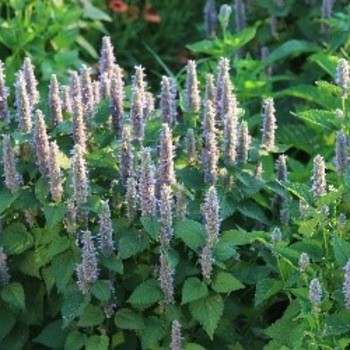
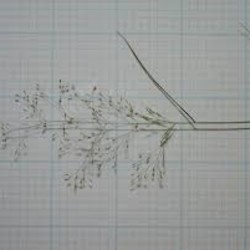
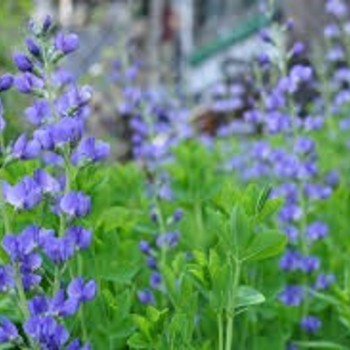
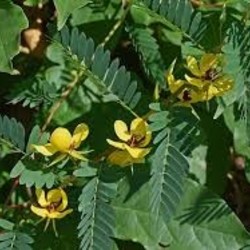
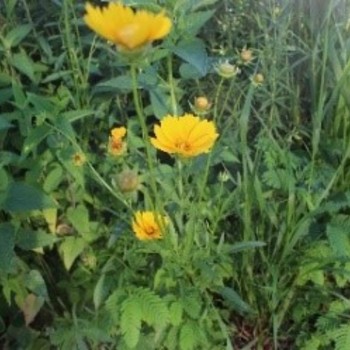
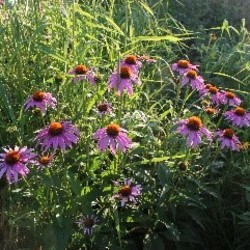
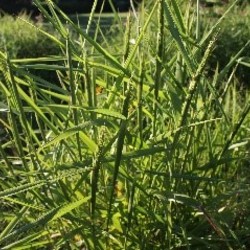
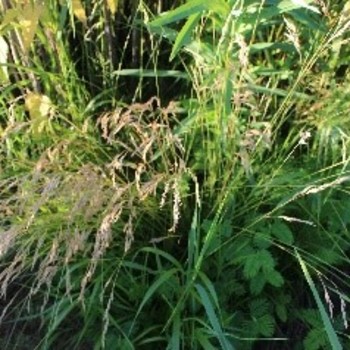
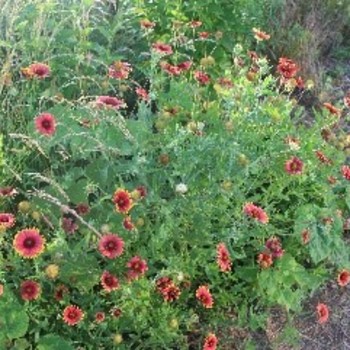
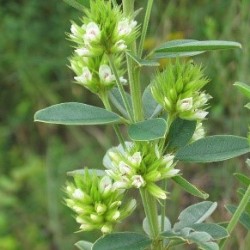
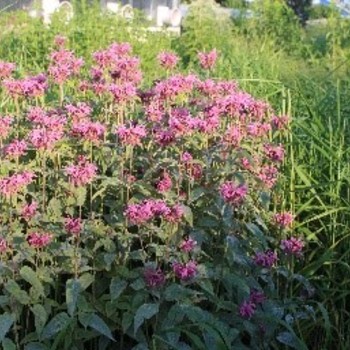
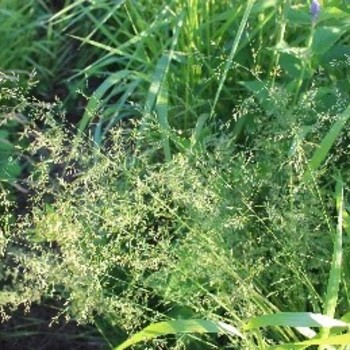
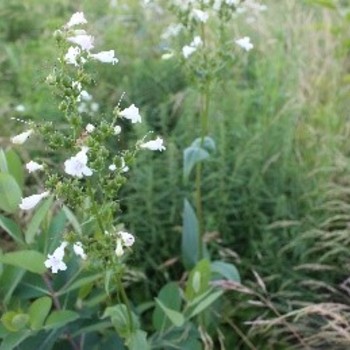
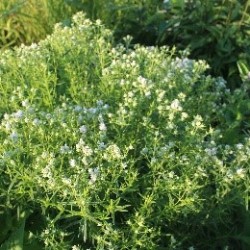
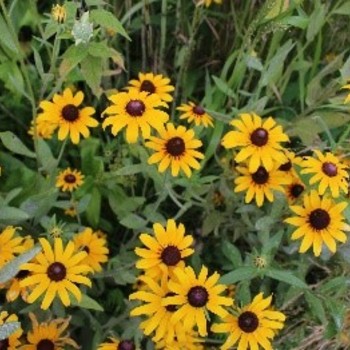
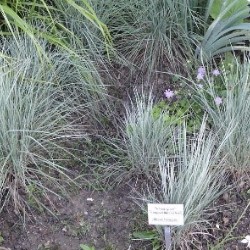
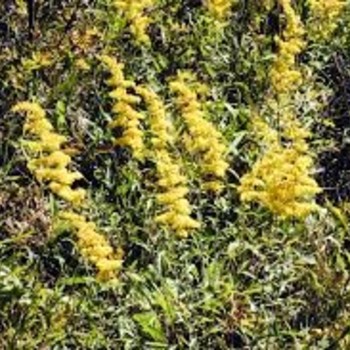
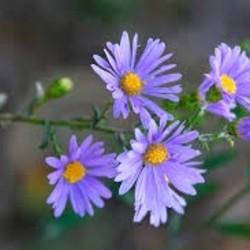
Desirable Species Likely to Colonize Meadows
Save your money and do not purchase these species. They will readily colonize the area in time.
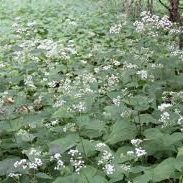
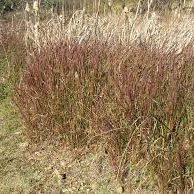
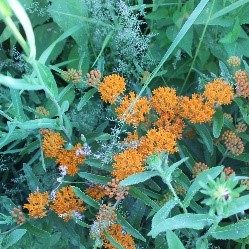
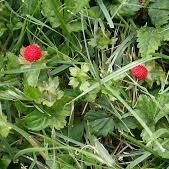
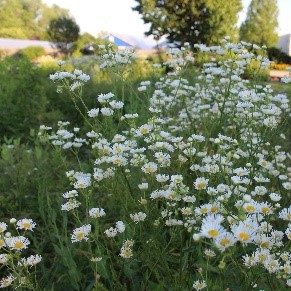
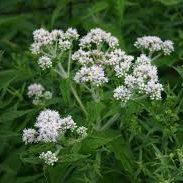
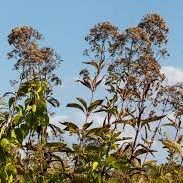
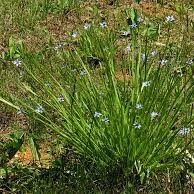
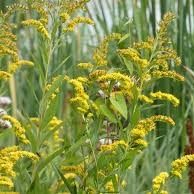
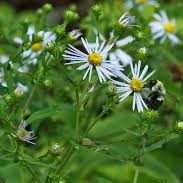
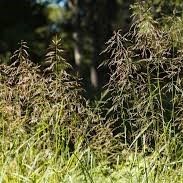
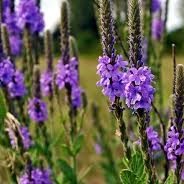
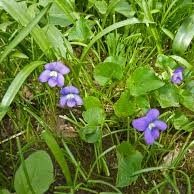
All photos provided by...
John Kazan except the following, which are free to use and share
Agrostis perennans - https://www.flickr.com/photos/dendroica/7878041026
Baptisia australis - https://www.flickr.com/photos/williumbillium/8796430316
Chamaecrista fasciculata - https://pixabay.com/photos/chamaecrista-fasciculata-2510597/
Lespedeza capitata - https://commons.wikimedia.org/wiki/File:Lespedeza_capitata_8071.jpg
Schizachyrium scoparium - https://commons.wikimedia.org/wiki/File:Schizachyrium_scoparium_-_Botanical_Garden,_University_of_Frankfurt_-_DSC02409.JPG
Solidago nemoralis - https://www.flickr.com/photos/gmayfield10/5307491178
Symphyotrichum laeve - https://www.flickr.com/photos/8583446@N05/3921828644
Ageratina altissima – https://commons.wikimedia.org/wiki/File:Ageratina_altissima_SCA-5475.jpg
Andropogon virginicus - https://www.flickr.com/photos/macleaygrassman/14333527215
Duchesnea indica - https://www.flickr.com/photos/14583963@N00/34387518332
Eupatorium sp. - https://commons.wikimedia.org/wiki/File:Eupatorium_perfoliatum_001.JPG
Eutrochium sp. - https://www.flickr.com/photos/tgpotterfield/15366550869
Sisyrinchium angustifolium - https://www.flickr.com/photos/blueridgekitties/19774746206/
Solidago sp. - https://www.flickr.com/photos/lindadevolder/36485844171
Symphotrichum sp. https://www.flickr.com/photos/tgpotterfield/9062781852
Tridens flavus - https://www.flickr.com/photos/tgpotterfield/12938265725
Verbena stricta - https://www.flickr.com/photos/59003943@N00/7769575646
Viola sororia - https://commons.wikimedia.org/wiki/File:Viola_sororia_in_Wisconsin.jpg
Works cited
Houck, M. J. 2009. Understanding seeding rates, recommended planting rates, and pure live seed (PLS). United States Department of Agriculture, Natural Resource Conservation Service, Alexandria, LA, Plant Materials Technical Note No. 11.
Meissen, J., D. Williams, and L. Jackson. 2017. Cost-effective pollinator seed mix design and first year management. University of Northern Iowa, Tallgrass Prairie Center, Cedar Falls, IA.
O’Rourke, M. E. 2017. Pollinator habitat establishment after organic and no-till seedbed preparation methods. HortScience 52(10): 1349-1355).
UD Cooperative Extension
This institution is an equal opportunity provider.
In accordance with Federal law and U.S. Department of Agriculture policy, Cooperative Extension is prohibited from discriminating on the basis of race, color, national origin, sex, age, or disability.
